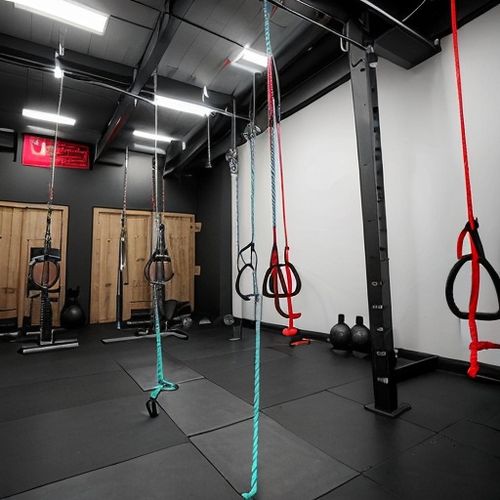The fitness world is constantly evolving, but some exercises stand the test of time. Burpees, often dubbed the "king of bodyweight exercises," have been a staple in military training, CrossFit boxes, and home workouts for decades. This full-body movement combines strength, endurance, and explosive power into one grueling yet highly effective package. Whether you love them or loathe them, there's no denying the impact burpees can have on your overall fitness.
Originally developed in the 1930s by American physiologist Royal H. Burpee as a way to assess physical fitness, this exercise has since taken on a life of its own. The modern version bears little resemblance to the original four-count movement used in Burpee's PhD thesis. Today's burpee has evolved into a more dynamic variation that often includes a push-up and vertical jump, making it significantly more challenging than its predecessor. The exercise gained particular prominence during World War II when the U.S. military adopted it as part of their physical training regimen.
What makes burpees so uniquely effective is their ability to engage multiple muscle groups simultaneously while providing cardiovascular benefits. From the moment you begin the movement until you complete the jump, your quads, hamstrings, glutes, chest, shoulders, arms, and core all come into play. This comprehensive muscle activation leads to higher calorie burn compared to isolated exercises. Research suggests that performing burpees at high intensity can burn approximately 10-15 calories per minute, making them one of the most efficient fat-burning exercises available.
The metabolic demands of burpees create what fitness experts call the "afterburn effect" or excess post-exercise oxygen consumption (EPOC). This phenomenon causes your body to continue burning calories at an elevated rate long after your workout has ended. Unlike steady-state cardio where calorie burn stops when the exercise stops, high-intensity movements like burpees can keep your metabolism firing for hours. This explains why burpee-focused workouts have become so popular among those looking to maximize their training time.
Proper form is absolutely critical when performing burpees to prevent injury and maximize results. The movement begins from a standing position before dropping into a squat with hands on the floor. From there, kick your feet back into a plank position while maintaining a straight line from head to heels. Many variations include a push-up at this point before bringing the feet back to the squat position and exploding upward into a jump. Common mistakes include rounding the back during the plank phase, not engaging the core throughout, and landing heavily from the jump which can stress the joints.
For beginners, modified versions can help build the necessary strength and coordination. Eliminating the push-up or jump reduces the intensity while still providing benefits. Another approach involves stepping back into the plank position rather than jumping the feet back. As fitness improves, more challenging variations can be incorporated. Some advanced options include adding a tuck jump, performing burpees with a weighted vest, or combining them with other movements like pull-ups or box jumps.
The versatility of burpees makes them adaptable to nearly any fitness goal. Those focused on endurance might perform high-repetition sets with minimal rest. Athletes looking to improve power might emphasize the explosive jump portion. Individuals seeking strength gains could incorporate weights or slow down the eccentric (lowering) portion of the movement. This adaptability explains why burpees appear in everything from HIIT routines to martial arts training to professional sports conditioning programs.
Beyond physical benefits, burpees offer psychological advantages as well. Completing a challenging set builds mental toughness and resilience. Many trainers use burpees as a form of "positive punishment" in workouts - not as actual punishment, but as a consequence for failing to complete another task. For example, missing a target time on a run might result in 20 burpees. This approach conditions athletes to push harder on their primary exercises to avoid the dreaded burpee penalty.
While burpees are undoubtedly effective, they aren't appropriate for everyone. Individuals with certain injuries or conditions like wrist problems, lower back issues, or uncontrolled high blood pressure should modify or avoid the exercise. Even healthy individuals should pay attention to their body's signals and maintain proper form rather than sacrificing technique for speed. As with any high-intensity exercise, proper warm-up is essential to prepare the muscles and joints for the demands of the movement.
The popularity of burpees has led to numerous creative variations and challenges. Social media is filled with burpee challenges ranging from 100 burpees a day for a month to completing as many as possible in set time frames. Some extreme fitness enthusiasts have even attempted marathon burpee sessions lasting hours. While such feats demonstrate the exercise's cultural impact in fitness circles, most trainers recommend more moderate, sustainable approaches for long-term results.
Incorporating burpees into a balanced fitness routine can yield impressive results. Many successful programs use them as finishers at the end of workouts or as part of circuit training. When combined with strength training, mobility work, and proper nutrition, burpees can help create a lean, strong, and resilient physique. The key is finding the right dosage - enough to challenge your body without leading to overtraining or burnout.
As fitness trends come and go, the humble burpee remains a constant. Its simplicity belies its effectiveness, requiring no equipment yet delivering comprehensive results. Whether you're a seasoned athlete or just starting your fitness journey, mastering the burpee can take your training to new heights. Just be prepared - the first time you do them properly, you'll quickly understand why they're both revered and feared in equal measure throughout the fitness community.

By George Bailey/May 20, 2025

By Rebecca Stewart/May 20, 2025

By Ryan Martin/May 20, 2025

By Amanda Phillips/May 8, 2025

By Lily Simpson/May 8, 2025

By Laura Wilson/May 8, 2025

By Sophia Lewis/May 8, 2025

By John Smith/May 8, 2025

By Sophia Lewis/May 8, 2025

By John Smith/May 8, 2025

By Ryan Martin/May 8, 2025

By Eric Ward/May 8, 2025

By Lily Simpson/May 8, 2025

By Victoria Gonzalez/May 8, 2025

By James Moore/May 8, 2025

By Emily Johnson/May 8, 2025

By Jessica Lee/May 8, 2025

By Grace Cox/May 8, 2025

By David Anderson/May 8, 2025

By Elizabeth Taylor/May 8, 2025